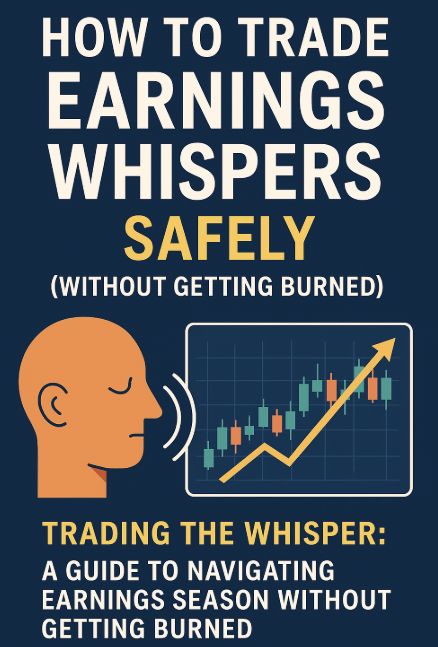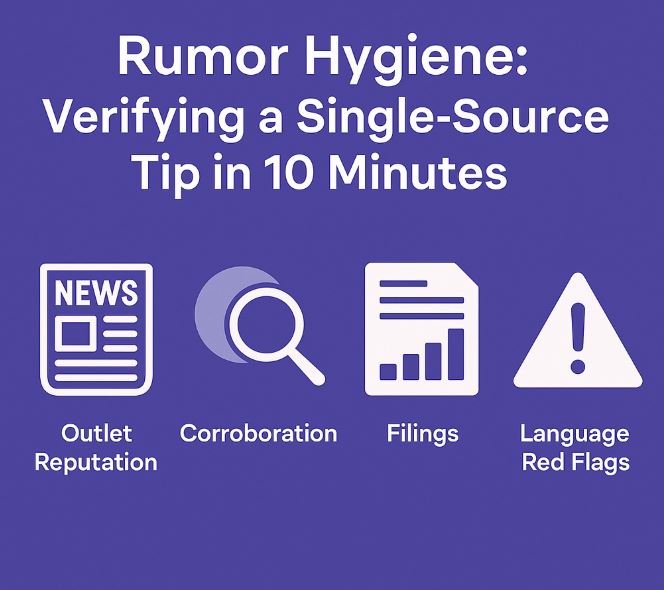
Trading the Whisper: A Guide to Navigating Earnings Season Without Getting Burned
The allure of the earnings whisper—the unofficial, often more accurate, forecast of a company’s quarterly performance—can be irresistible for traders seeking an edge. Whisper numbers often move stocks before official results, but trading them blindly is a fast way to get burned. This guide breaks down what whispers are, why they matter, and how to trade them with strategies that protect your capital. This is not financial advice.
What Is an Earnings Whisper?
Before risking money, it’s critical to understand what these numbers mean and how they differ from consensus estimates.
- Definition: An earnings whisper is an unpublished, unofficial earnings per share (EPS) forecast circulated among market insiders. Unlike consensus estimates, whispers reflect the “street’s” real expectations.
- Why It Matters: Companies can beat Wall Street consensus but still miss the whisper. In these cases, the stock often sells off, showing whispers can drive price action more than official numbers.
- Where to Find Them: Financial news sites and paid subscription services aggregate whisper data. Always check the credibility and methodology before trading on any source.
Proven Strategies for Trading Earnings Whispers
Trading whispers isn’t as simple as buying on high numbers or selling on low ones. Earnings season brings volatility, so disciplined setups are key.
1. Pre-Earnings Momentum
- The Play: Go long ahead of earnings if the whisper suggests a big beat. Stocks often run up in anticipation.
- Risk Management: Beware of the “sell the news” effect. Set a stop-loss and know your exit before the announcement.
2. Post-Earnings Surprise
- The Play: React after results are released by comparing actual EPS against both consensus and the whisper.
- Beat and Raise: If a company tops both numbers and raises guidance → bullish setup.
- Missed Whisper: If consensus is beaten but whisper is missed → bearish setup.
- Risk Management: Wait for volatility to settle (15–30 minutes after release). Use limit orders to control entry.
3. Options Strategies (Defined Risk Plays)
Because earnings events are binary, options allow you to cap risk.
- Long Straddle/Strangle: Profit from big moves in either direction by buying calls and puts. Risk is limited to premiums paid, but implied volatility makes these trades costly.
- Bull Call Spread: Buy a call at a lower strike, sell a higher strike to reduce cost. Works when bullish on whispers.
- Bear Put Spread: Buy a put at a higher strike, sell a lower strike. Works when bearish on whispers.
The Golden Rules of Whisper Trading
No matter the strategy, risk management determines survival. Follow these rules:
- Size Positions Conservatively: Don’t risk more than 1–2% of total capital. Keep earnings plays smaller than usual.
- Always Use Stop-Loss Orders: Prevent small losses from becoming disasters. Account for potential slippage.
- Cross-Check Data: Verify whispers from multiple sources and weigh fundamentals alongside sentiment.
- Understand Implied Volatility: Options lose value quickly after earnings (volatility crush). Factor this into your setups.
- Plan Entry and Exit Ahead: Define profit targets and stop points before trading. Never let emotion dictate.
- Practice First: Use paper trading accounts to rehearse strategies before risking cash.
The Bottom Line
Earnings whispers can provide an edge, but they are not shortcuts to easy profits. The key is discipline: know what whispers mean, apply structured strategies, and protect your capital at all costs. Success in whisper trading comes not from chasing every rumor, but from combining research, risk management, and patience. This is not financial advice.
If you can master these principles, you won’t just survive earnings season—you’ll learn to trade it with confidence. This is not financial advice.



